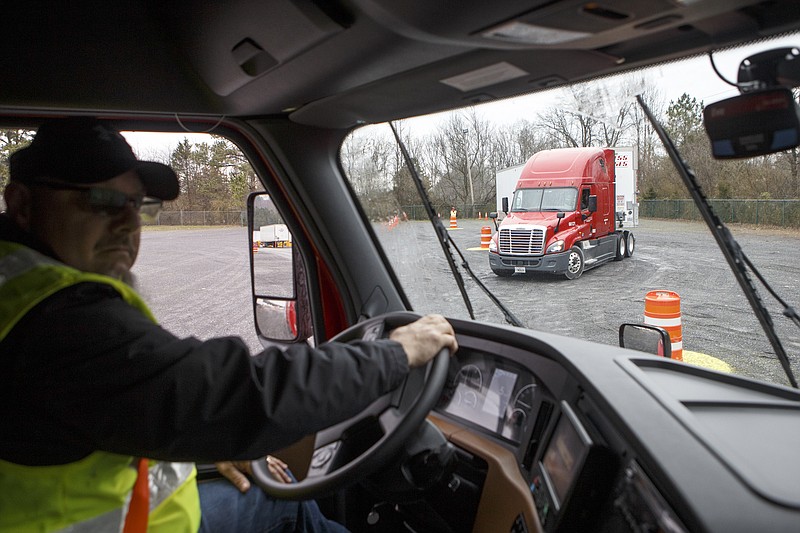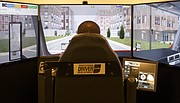U.S. Xpress Enterprises unveiled a new professional development program for its commercial drivers on Tuesday that will use industry-leading technology to better prepare new drivers for the road and provide ongoing development for current ones.
At the company's Tunnel Hill facility in north Georgia, executives focused on how the new program will prepare new hires, whether they are coming to U.S. Xpress straight from earning their commercial driver's license or have years of experience at other companies. U.S. Xpress officials said the company currently has about 8,000 drivers, and the new program has already trained about 250 drivers in the past six weeks.
The new program and approach steers away from the traditional classroom style that drivers have historically trained in industry-wide. It involves hands-on and self-paced learning modules in a new computer lab, practice in the safety of a controlled driving range, stations where drivers can practice inspecting and fixing defects in parts, the chance to apply lessons in a driving simulation lab with augmented reality and more.
Matt Herndon, the company's chief operating officer, said the company has been undergoing a transformation in the last few years with significant changes in leadership, operations and technology.
"Truck drivers, like any profession, need ongoing training, development, support and practice," Herndon said. "That's why we are investing in our drivers like never before with a completely new approach."
In 2018, the average turnover rate at some of the largest truckload carriers in the country was 95 percent. Last year, U.S. Xpress announced another pioneering program called "Full Ride" at an online college to its drivers and their families. U.S. Xpress CEO Eric Fuller said it typically costs the company more than $5,000 to recruit and train a new driver.
Ralph Romero, vice president of organizational development, said U.S. Xpress used to provide two or three days of classroom work for new hires and there was little to no interaction with an actual truck before they hit the road. He said U.S. Xpress reached out to and learned from other companies nationwide who have similar programs, but he said they found many companies who use vendors that provide generalized training and not company-specific training, like the Chattanooga-based company's new professional driver development program.
In the computer lab, drivers now have the choice of more than 30 videos and 10 e-learning modules they can complete at their own pace. In the driving simulation lab, U.S. Xpress partnered with Virage Simulation to create a truck simulator customized to "look and feel" like a U.S. Xpress truck, which is mounted on a motion system and includes screens that provide a 180-degree field view. The simulator provides lane-departure warnings, collision mitigation and more.
In the commercial motor vehicle lab, drivers can go through different stations that teach them everything from determining defects in tires to defects in the brake system. They inspect parts and determine how they might fix them on the road.
Out on the driving range, trainees can put what they have learned in labs to practice by conducting different maneuvers in front of instructors - from backing up to completing the "serpentine course," or driving in a figure eight.
One instructor said he's heard good feedback about the program, saying one told him he learned he had been doing a maneuver wrong his whole career and another had never driven an automatic and needed the practice.
Nailah Miller-King has been a driver for three years and helped company officials with the development of the program.
"Just like any other employee, we do have to take training just to develop our craft," she said.
Contact staff writer Allison Shirk Collins at ashirk@timesfreepress.com, @AllisonSCollins or 423-757-6651.

